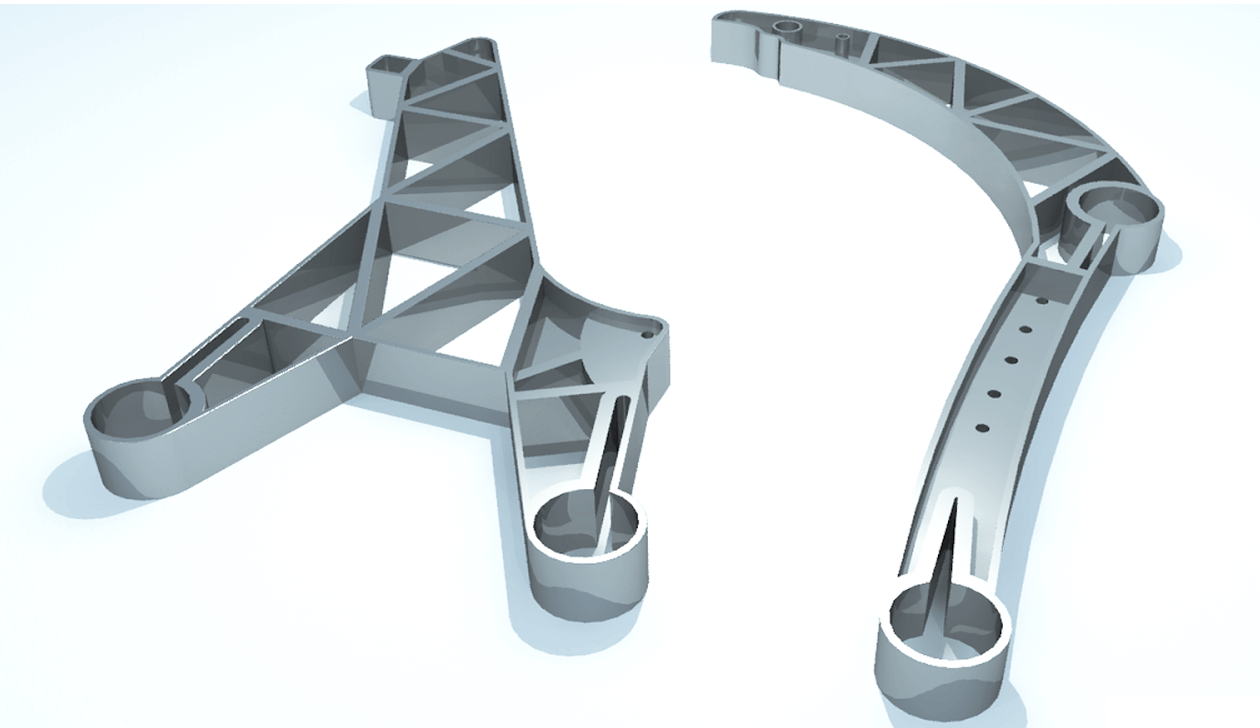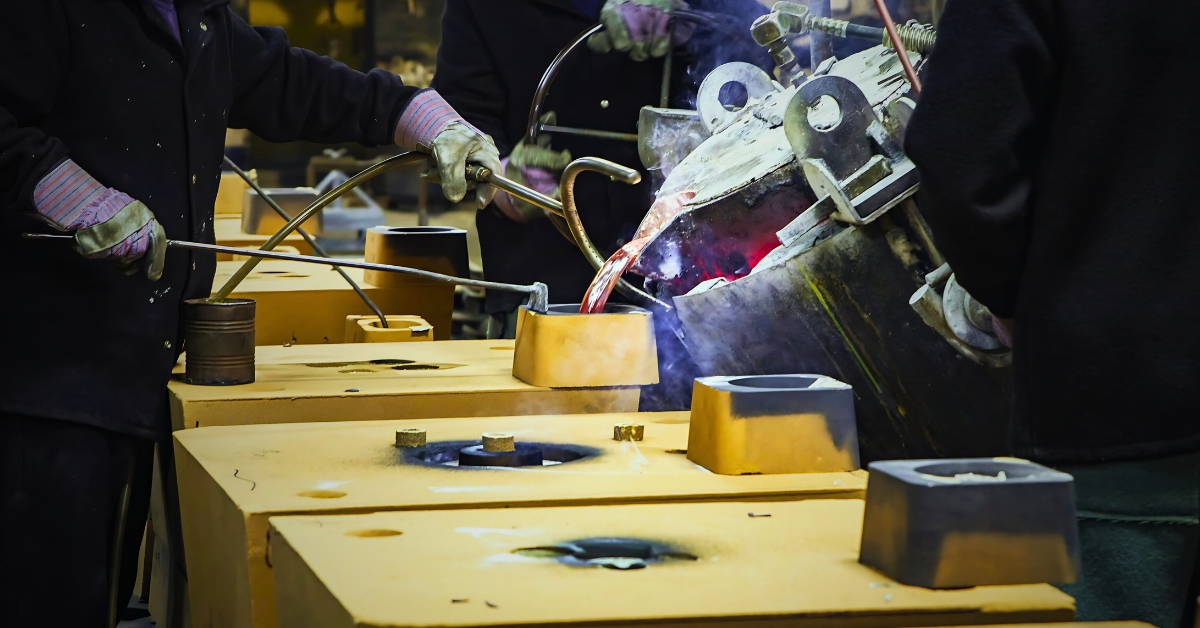Discover what makes Aluminum Foundry important in aluminum casting applications
Wiki Article
The Duty of Aluminum Foundry in Enhancing Production Efficiency Throughout Diverse Sectors
Aluminum shops serve an essential function in modern manufacturing by improving production performance across different fields. They harness advanced methods and lasting methods to optimize workflows and minimize waste. The impact of Aluminum includes industries such as automotive, aerospace, and construction, where its one-of-a-kind buildings enhance performance. The difficulties dealt with by these shops could shape their future. Aluminum Foundry. Recognizing these dynamics reveals a complex landscape of development and adaptationThe Value of Aluminum in Modern Production

The adaptability of Aluminum makes it possible for a large range of construction strategies, consisting of machining, extrusion, and casting. Its recyclability additionally highlights its importance, as recycled Aluminum calls for significantly less power to produce than new Aluminum, lining up with modern ecological goals. As sectors continue to develop, Aluminum's distinct attributes and flexibility ensure it continues to be an important product for driving advancement and efficiency in manufacturing processes. Its contributions extend past functionality, supporting financial growth and sustainability campaigns around the world.
Trick Processes in Aluminum Foundries
In Aluminum shops, numerous vital processes are important for attaining high production efficiency. Thawing and alloying techniques, along with molding and spreading approaches, play an important duty fit the last item. In addition, implementing rigid quality assurance gauges warranties that the outcome satisfies industry criteria.Thawing and Alloying Techniques
Melting and alloying are basic procedures in Aluminum shops, their effectiveness significantly impacts overall manufacturing quality and expense. The melting process commonly involves making use of electrical heating systems or gas-fired systems, which permit exact temperature level control. This assures that Aluminum reaches its excellent melting factor, lessening energy consumption. Alloying, on the various other hand, entails the addition of specific aspects to achieve wanted material buildings, such as stamina and deterioration resistance. Methods such as pre-alloying and in-situ alloying are commonly utilized to boost uniformity and reduce waste. Cautious tracking during both melting and alloying stages is crucial, as it straight influences the material qualities and assurances compliance with industry criteria, inevitably bring about improved production efficiency throughout different markets.Molding and Casting Techniques
A variety of molding and spreading methods are critical to the performance and quality of Aluminum shops. Amongst these methods, sand casting, die casting, and permanent mold and mildew casting attract attention due to their one-of-a-kind benefits. Sand spreading uses flexibility for complex shapes and is cost-efficient for low manufacturing quantities. Die spreading, known for its accuracy and repeatability, is ideal for high-volume manufacturing, providing outstanding surface area finishes and dimensional accuracy. Permanent mold casting incorporates the benefits of both sand and die spreading, permitting better mechanical residential or commercial properties and minimized product waste. Each method offers details applications throughout varied markets, enabling Aluminum foundries to optimize production procedures, reduce preparations, and fulfill differing consumer demands properly.Quality Control Measures
Ensuring premium Aluminum products needs extensive quality control measures at every phase of the Foundry process. These actions begin with the option of resources, where thorough testing for impurities and structure is crucial. Inspections during the molding and casting stages check dimensions and surface area quality to avoid issues when materials are approved. Advanced methods, such as non-destructive screening, are utilized to identify inner imperfections that might compromise product integrity. Additionally, procedure control systems constantly check temperature and alloy structure to maintain uniformity. Last examinations, including mechanical residential or commercial property screening, confirm that the products meet industry criteria. By applying these rigorous quality control protocols, Aluminum foundries boost production efficiency and guarantee the reliability of their products throughout varied sectors.Developments Driving Manufacturing Efficiency
Advancements in Aluminum factories are reinventing manufacturing performance through innovative casting techniques and the assimilation of automation and robotics. These growths not only enhance procedures however also enhance accuracy and decrease waste. Furthermore, lasting product technologies are contributing to even more eco-friendly practices within the industry.Advanced Casting Techniques
Many advanced casting strategies are transforming the Aluminum Foundry market, considerably enhancing production effectiveness. Approaches such as die casting, sand spreading, and investment spreading have advanced, permitting boosted accuracy and minimized waste. Developments like computer-aided design (CAD) and simulation software application allow foundries to optimize mold design and predict prospective issues before production, minimizing expensive errors - Aluminum Foundry. In addition, making use of alloy advancement strategies enhances material residential or commercial properties, causing items that satisfy stringent efficiency demands. Methods such as quick prototyping and 3D printing are also obtaining traction, helping with faster turnaround times for intricate geometries. These innovations not only improve manufacturing procedures yet also add to sustainability efforts by minimizing power consumption and enhancing product use in the Aluminum casting market
Automation and Robotics Assimilation
The integration of automation and robotics in the Aluminum Foundry industry is reinventing manufacturing performance. By utilizing innovative robot systems for jobs such as molding, pouring, and completing, foundries are substantially reducing labor expenses and minimizing human error. Automated procedures simplify assembly line, permitting for faster turn-around times and consistent quality in made components. Additionally, the implementation of real-time monitoring systems allows drivers to track performance metrics and optimize process proactively. Robotics likewise boosts safety by taking over hazardous tasks, consequently minimizing work environment accidents. As the modern technology remains to evolve, the Aluminum Foundry industry is poised to take advantage of these innovations better, guaranteeing competition and responsiveness in an increasingly demanding market.
Lasting Product Innovations
As the Aluminum Foundry market seeks to boost manufacturing efficiency, lasting product innovations are emerging as a critical aspect. These advancements consist of the growth of green alloys and the usage of recycled Aluminum, substantially minimizing the environmental impact of manufacturing procedures. Advanced methods, such as additive production and environment-friendly spreading techniques, make it possible for shops to minimize waste while boosting material residential or commercial properties. In addition, the integration of bio-based binders and finishes causes healthier workplace and decreases exhausts. The adoption of life cycle analysis devices additional aids shops in identifying sustainability chances, straightening with global trends towards accountable manufacturing. These improvements not just improve manufacturing performance but also position the Aluminum Foundry field as a leader in lasting commercial techniques.Ecological Sustainability in Aluminum Spreading
While Aluminum spreading has long been a staple in manufacturing, its ecological influence has actually prompted a change in the direction of even more sustainable techniques. Numerous factories are now taking on green strategies to lessen waste and energy consumption. By using recycled Aluminum, factories considerably minimize the demand for virgin materials, thus saving natural sources and lowering greenhouse gas discharges.Innovations such as sophisticated melting innovations and enhanced heating system designs in addition improve energy efficiency. Applying closed-loop systems permits for the recycling of scraps and by-products, lessening garbage dump contributions. In enhancement, using water-based coverings and biodegradable products in the spreading procedure decreases unsafe exhausts and environmental toxic substances.
As industries significantly prioritize sustainability, the Aluminum casting industry is aligning with these worths, demonstrating that financial development and ecological responsibility can exist side-by-side. This commitment to sustainable techniques not only benefits the setting yet likewise placements Aluminum factories as leaders in liable manufacturing.
Applications of Aluminum Parts in Various Industries
Aluminum components are significantly used throughout different sectors due to their one-of-a-kind residential properties, that include light-weight strength, deterioration resistance, and outstanding thermal conductivity. In the automobile sector, Aluminum is necessary for generating lighter automobiles, contributing to enhanced fuel efficiency and decreased exhausts. The aerospace industry leverages Aluminum alloys for airplane parts, gaining from their high strength-to-weight ratio, which improves efficiency and safety and security.In construction, Aluminum is preferred for home windows, doors, and roofing because of its sturdiness and aesthetic charm. The electric field utilizes Aluminum in power lines and parts, making the most of its conductivity and resistance to rust. Additionally, the durable goods market makes use of Aluminum in product packaging and family products, advertising sustainability through recyclability (Aluminum Foundry). Overall, Aluminum components play an important function ahead of time technological innovations and operational efficiencies throughout varied sectors, highlighting their relevance in modern-day manufacturing and design
Obstacles Faced by Aluminum Foundries
Numerous obstacles face Aluminum foundries, influencing their effectiveness and efficiency. One significant concern is the volatility of resources costs, which can fluctuate unpredictably, impacting functional prices and profit margins. In addition, shops frequently face strict environmental policies, needing pricey investments in sustainable methods and waste management systems. Labor shortages existing an additional obstacle, as the skilled labor force needed for specialized processes ends up being increasingly limited, bring about prospective hold-ups and quality control issues.Moreover, technical assimilation poses challenges; shops should constantly adjust to advancements in automation and digital tools to continue to be competitive. Inefficiencies in manufacturing processes, such as poor melting and spreading strategies, can additionally impede result. Ultimately, the need for customized services across different fields pressures shops to stabilize adaptability with effectiveness, complicating manufacturing timetables. Together, these difficulties produce an intricate landscape that Aluminum foundries must browse to enhance their general effectiveness.
Future Fads in Aluminum Foundry Innovation
As the Aluminum Foundry sector progresses, arising modern technologies are set to reinvent production procedures and enhance performance. Advancements in automation, such as robotics and synthetic intelligence, are anticipated to enhance procedures, lower labor costs, and boost accuracy. On top of that, improvements in 3D printing modern technology will certainly permit the quick prototyping of complex Aluminum parts, lowering lead times and material waste.In addition, the assimilation of IoT (Internet of Things) will certainly enable real-time surveillance of manufacturing procedures, enabling for predictive maintenance and reducing downtime. Sustainability will likewise play a critical duty, with a boosting concentrate on recycling and power performance in Foundry operations.

Frequently Asked Concerns
What Are the Costs Connected With Aluminum Foundry Manufacturing?
The prices connected with Aluminum Foundry production consist of raw product expenses, labor prices, energy usage, upkeep of tools, and expenses. These variables collectively affect the total financial practicality and performance of the Foundry procedures.How Do Foundries Make Certain Quality Assurance in Aluminum Spreading?
Factories ensure quality assurance in Aluminum casting through extensive testing procedures, consisting of material evaluation, dimensional examinations, and process tracking. Executing standardized treatments and using innovative technologies helps maintain uniformity and fulfill sector specs throughout production.What Security Measures Are Executed in Aluminum Foundries?
Precaution in Aluminum factories consist of individual protective devices, correct air flow systems, regular safety training, emergency situation procedures, and tools upkeep. These practices intend to reduce dangers, ensuring the wellness of workers and maintaining operational efficiency.The length of time Does the Aluminum Spreading Refine Usually Take?
The Aluminum casting process normally takes several hours to a number of days, depending upon factors like the intricacy of the design, the dimension of the actors, and the certain strategies employed by the Foundry.What Abilities Are Required to Operate In an Aluminum Foundry?
To operate in an Aluminum Foundry, people require skills such as metallurgy understanding, machining effectiveness, interest to detail, analytic capacities, and teamwork. Safety and security recognition and technological know-how in casting processes are also crucial for effective procedure.Its recyclability better highlights its importance, as recycled Aluminum requires considerably much less energy to create than brand-new Aluminum, lining up with contemporary ecological objectives. A selection of molding and casting techniques are vital to the effectiveness and quality of Aluminum foundries. Innovations in Aluminum shops are revolutionizing manufacturing performance through innovative casting strategies and the assimilation of automation and robotics. Many advanced casting methods are transforming the Aluminum Foundry industry, substantially boosting production efficiency. Shops assure quality control in Aluminum casting through extensive screening procedures, consisting of product evaluation, dimensional examinations, and process tracking.
Report this wiki page